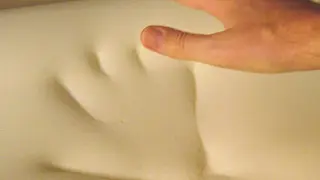
Memory foam began when Charles Yost was instructed to develop seating that would maximize the chances of passengers surviving a crash.
Absorbing energy
Charles knew that the key to safe recovery was to develop a material that could absorb energy from crashes. He created a special type of plastic foam that possessed unusually high energy absorption while maintaining softness and pliability. It could deform and reform: but always returned to its original shape.
A molded mattress
Memory foam, as it came to be called, is made up of polyurethane. Chemicals are then added to give the material viscoelastic properties. Researchers even found that higher-density memory foam would soften in reaction to heat, allowing it to mold to a warm body in a few minutes – making it an ideal material for supportive mattresses.
An instant hit
In 1967, Charles started his own company to commercialize the invention. It was an instant hit, and has gone on to be used in everything from helmet linings and insoles, to prosthetic braces for injured animals.
